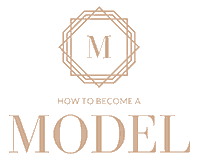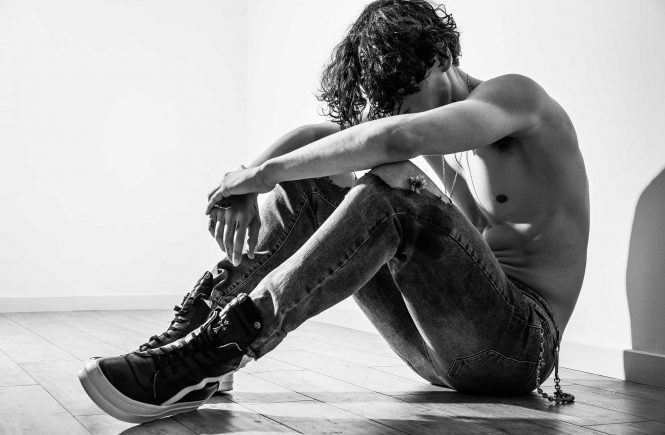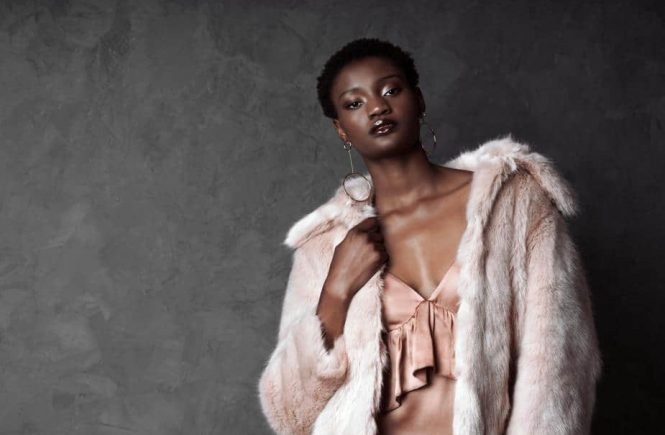Male Models – Coming Soon
Highs & Lows of Modelling
For many, wanting to become a model is filled with ambitions of travelling the world, experiencing the high life and wearing beautiful, glamourous clothes. And without a doubt, the modelling world can be a wonderful place for those who are hard working, gutsy and lucky enough to make it!
However, it is also irresponsible to paint a purely rosy portrait of becoming a model and there are some very harsh truths of the industry that it’s important for aspiring models to be aware of.
First, some of the positives of being a model include:
- Modelling can be a fantastic confidence boost and seeing finished photos featuring you within the pages of a magazine or on television is an exhilarating feeling… plus, just wait for the first time someone ‘recognises’ you – what a thrill!
- Many reputable agencies will cover some of your expenses that will enhance your quality of life such as putting you up in a model apartment (which you will likely share with a couple of other models), a personal trainer and dietitian.
- You’ll get to meet loads of interesting people, from other models to photographers, directors, designers and even celebrities. If you’re a social butterfly, you’ll flourish!
- The opportunity to make it big is alluring and if you have a competitive personality, you’ll enjoy the thrill of beating out other models to get the top jobs.
- On many shoots, designers will let models keep some of the items they model such as clothes, shoes and jewellery as part of their payment.
- If you’re ambitious and with a good work ethic, you can really go far. Your limits are only as far as you can push yourself and what the industry is responding to. If you have a classic look or a look that’s on trend, your chances of making it big are much higher.
- Modelling provides opportunities to other endorsements that can further your career in directions that you may not have considered (such as being a spokesperson for a lifestyle brand).
- Modelling isn’t a ‘stable’ job so if you like excitement and moving around a lot, this may be an exciting lifestyle for you.
- If you get chosen to work at a Fashion Week, this is an amazing opportunity for your career – you’ll have more exposure than ever before, the atmosphere is exhilarating and you’ll make a good income from these jobs, too.
- As a model, often you’ll get free passes to parties, nightclubs and events practically every week of the year (club promoters love to have talent at their venues) so if you love the nightlife, this a great industry for you.
- You get to have the personal satisfaction of having a career that lets you chase your dreams… very few people can say that!
However, you must also be prepared for the negatives of being a model:
- Initially, you may not be getting paid a lot per job and you may not have jobs coming in consistently, which can reduce your finances and could cause you stress (this is why we recommend having a second job as you start your modelling career).
- Depending on your niche, you may likely have to diet (or at least, keep control of your health and fitness regime) in order to stay in good shape.
- Modelling often involves very long hours, lots of standing and having to pose. This can place strain on your feet, hips, back and joints so you will need to develop good endurance.
- If you’re someone who gets bored or tired easily, you may struggle – many jobs can be boring or exhausting, for instance if you’re booked as part of a large campaign you may be on set all day, yet only shooting your part for an hour or so.
- If you’re travelling a lot (as many models have to do to keep work coming in), you might find yourself getting homesick. Travelling also can compromise your immune system if you’re not careful, and getting sick can knock you out of being able to work for a short while (thus reducing your income).
- There are a lot of scams around that seek to lure in young, inexperienced aspiring models so you must be vigilant of who you trust.
- The modelling industry can be ruthless and many clients and agents may pressure you change your body – you must maintain a healthy body image as such an image focused industry may open you up to being obsessed with your weight or developing an eating disorder.
- With your livelihood being dependent on your face and/or body, the jobs you are able to book will vary over time with age and as your body changes. Many companies are now using mature age models, but you must make peace with the fact that the jobs you book may change over time. Many models also struggle with the career vs. motherhood dilemma, particularly as modelling is very image focused so many models worry that their work will dry up if their body goes through the drastic changes of pregnancy.
- Hectic schedules are the norm in the modelling industry so be prepared for a lot of early mornings and late nights! At the same time, models are also expected to get adequate rest to ensure they don’t look tired and can stay healthy.
- If you don’t enjoy fashion, you’ll likely struggle with constantly being in high heels and constrictive clothing. It may look glamourous but it certainly doesn’t always feel good on the body!
- The modelling industry is also rife with drug and alcohol abuse (as many models self-medicate to deal with the pressures of the job) so you must be careful of who you befriend… getting pulled into the wrong social circle in modelling can kill your career!
- Not everyone will treat you kindly. As a model, many will consider you as a product or tool rather than as a person (this isn’t nice, but it’s a harsh truth of the industry – especially in the beginning of your career when you’re still unknown). You’ll find that people may talk at you rather than to you. If you’re lacking in confidence, you’ll need to develop a thick skin very quickly.
Note that in saying this, it is not our aim to discourage you from becoming a model. Modelling is just like any other job in any other industry and like all jobs, there are pros and cons (for example a lawyer might earn a lot of money, but also they may sacrifice time with their family while working long hours… or a shop manager might love the freedom of being their own boss whilst also feeling the struggle of having to consistently keep the customers and money coming in).
Like any industry and job, do your research – we cannot stress this enough! Although some models won’t make it, others will give up on their dreams and others will find the downsides of the industry outweigh the pros… other models will thrive, succeed and love every moment of it.
Only you best know yourself, your dreams and what you want to achieve… so ask yourself, what does modelling mean to you? What do you hope to achieve? Is it worth it?
By understanding yourself and why you want to become a model, you can then make informed decisions about how to best shape your career.
Modelling Tips – On the Job
Modelling isn’t all glitz and glamour! As any established model will tell you, it’s hard work, long hours, grit and ambition… and that’s just the job itself! The other half of being a model is keeping yourself in shape, being friendly and personable and of course, being professional!
Here are 7 essential tips how to be professional as a model:
Tip 1: Make sure your portfolio photos actually represent you.
This may seem very obvious but ensure that your portfolio photos are an accurate representation of how you actually look. Many clients will have specific requirements for their jobs and there is nothing worse for a client than booking a model based on their portfolio only to have the model turn up and look nothing like the image that their portfolio portrayed! There is a fine line between artistic license and trickery, so make sure any creative or highly styled versions of yourself that you portray in your portfolio still show glimpses of what you look like. Similarly, be sure to let your booker know of any changes that you’re making to your appearance (e.g. if you’re a blonde and your portfolio shows you as a blonde – a client that books you wanting a blonde will be shocked if you show up having dyed your hair red… and your booker will be none too happy that you didn’t let them know!)
Tip 2: Always be punctual.
Models who frequently run late to jobs will rapidly develop themselves reputations as being divas… and you definitely want to avoid this! If you are on time to all your modelling jobs, talent bookers and clients alike will remember your professionalism and will be more like to book you again in the future.
Tip 3: Be courteous.
Modelling is largely based on your appearance, but your clients and talent bookers will also remember your personality. Being polite and courteous will ensure that you make a good impression and if your clients and bookers have a good experience with your personality, they’re more likely to book you for bigger and better jobs. Remember, modelling is just like any other job so be respectful.
Tip 4: Be contactable 24/7.
In modelling, jobs come in at all hours of the day and often at short notice… too many models have lost a major booking because they haven’t answered their phone or checked their emails. If you’re frequently uncontactable, bookers will lose interest in you altogether.
Tip 5: Be considerate of your booker’s time.
Your booker will also be looking after tens or hundreds of other models so although you are understandably anxious to book more jobs or see the outcome of a campaign that you’ve booked, but try not to hassle your booker.
Tip 6: Come prepared.
Make sure you read the briefs given to you by your agency so you’re fully aware of exactly what’s expected of you when you arrive. If there’s anything that you need clarification on, make sure to talk with your manager ahead of time and importantly, read the grooming brief (as some jobs may require to arrive with a bare face, washed hair etc).
Tip 7: Never feel as though you’re above the job.
Not every job will have the biggest budget however, every job you book is good exposure and benefits your career and portfolio. You’ll also gain valuable work experience.
Building your portfolio
As a model, your portfolio represents your livelihood. Whether you’re freelance or represented by an agency, a portfolio that showcases your best looks can help you advance your career and book the next big job – and regardless of what kind of modelling experience you have, selecting the right images that highlight your strengths as a professional proves to anyone hiring that you’re serious about your modelling career.
When you’re first starting out as a model, it’s not required that you have professional photos, simple snapshots are all you need to find out if an agency is interested in you. These snapshots can be taken on an iPhone in high quality or with a friend holding a digital camera (or even by yourself with your camera on a timer!)
But, if an agency is interested in you but is unsure if they’re ready to sign you to their books, the agency may request that you build your portfolio and work on developing your look. For new models, this can be a confusing time especially if they are unsure on the best way to go about building their portfolio in a way that highlights their best assets so they’re more attractive to agencies.
So what do agencies look for in your snapshots?
Agencies will be looking to see some specific shots in your portfolio in the beginning of your modelling career – this will help them to best see your potential and book you for the right jobs that will earn you the most and allow you to best build up your portfolio for future opportunities. Agencies specifically look for shots that show your versatility as a model and your ability to express yourself. They also like to see how well a model can tell a story or capture an emotion in their photos… storytelling is powerful!
Here are some essential shots you’ll need in your portfolio:
A clean headshot, or a “beauty shot”
A beauty shot (for fashion & editorial models) or a clean head shot (for commercial models) is the first photo that you should be concentrating on for building your portfolio. A beauty shot is a colour photo of the model’s face, generally from the shoulders up, and its purpose is to show the model in their most natural state. This allows the agency and/or client to see exactly how the model looks without heavy makeup or styling so that they can best cast the model. In a clean headshot or beauty shot, you should aim to keep hairstyling, makeup and jewellery to an absolute minimum and if you’re an editorial model, you usually will not smile for a beauty shot.
A commercial headshot can be a little more relaxed than a beauty shot – it can be either black and white or colour, and can be shot anywhere from the waist up. Commercial models may choose to be smiling or not in their headshots (depending on the sort of jobs that they hope to book and the look that they want to portray).
A beauty shot or headshot should always be the first photo in your model portfolio.
A full length body shot
The second photo in a model’s portfolio should be a full length body shot that allows the client or agency to see your proportions and body type. Clothing should be form fitting and simple, this is why you’ll see many models use a full length body shot featuring them in skinny jeans and a tank top. The model should not be wearing long dresses, skirts or excessive layering that can distract/busy the photo and cover up what agencies and clients will be wanting to see!
Swimsuit shot
In Australia, if you’re over 16 years of age and feel comfortable taking a swimsuit shot), then this should also be included in your modelling portfolio for versatility (even if you’re not aspiring to be a swimsuit or lingerie model). Versatility is very important!
When doing a swimsuit shot, always consider the message that you’re sending – if you’re aspiring to make a living from swimsuit and/or lingerie modelling, you might take a more playful or sexy photo however if you’re an aspiring commercial model, simply showing yourself in a swimsuit looking fun and happy is the right tone to portray. Budding editorial models might use their swimsuit look to portray something moody and high-fashion.
Editorial fashion shot (for fashion models)
In the middle of your portfolio, don’t be afraid to get creative and have some fun! This is also where you can add some tearsheets if you have them. In fashion and editorial photos in your portfolio, express yourself – show the agents and clients your ability to move and do something interesting. Agents love to see motion shots!
Commercial shot (for commercial models)
Commercial models also need to show the agents and clients their range and ability to express themselves… in many ways, commercial modelling is very similar to acting and as such, some basic training in acting is recommended. Clients and agents will want to see a variety of emotions that you can depict so as a commercial model, you may wish to have multiple commercial shots that show you laughing, crying, surprised etc.
A smiling shot
If you don’t already have a smiling shot (as a commercial headshot or somewhere in the middle of your portfolio), then make sure to also add a good smiling head shot! Agents and clients will be looking for your beauty in your smile and teeth – but don’t worry if you don’t have perfect teeth! In fact, many supermodels are revered for their gap toothed smiles or overbites, which are now considered sexy! In one episode of America’s Next Top Model, host Tyra Banks famously sent one of her aspiring models to the dentist to have a small gap in her teeth made even wider… this was deemed as part of her signature look!
A strong closing shot
As a rule of thumb, always end your portfolio with one of your strongest photos. A good pick is another great beauty shot or headshot with a slight variation to your opening shot. Agents and clients will notoriously remember the first and last shot in a model’s portfolio, so make sure you go out on a high note and leave a killer impression!
When it comes to your model portfolio photos, quality matters more than quantity! If you’ve already had some experience with campaigns and jobs, be sure to include this too.
In your portfolio, keeping tight control of its content is a must. Understand your strengths as well as your weaknesses and show a potential client or agent that you can find your best angles.
In your portfolio, you’ll want to also include:
- Your statistics (height, weight, measurements, clothing sizes hair and eye colour)
- Any notable markings or features such as tattoos or scars
- Relevant skills that you have (e.g. maybe you can play a sport or an instrument)
- The type of work you’re willing to do
It’s important to know that your reputation is also as important as having an impressive portfolio… be considerate of photographer, client and agencies time, be friendly and polite and always go above and beyond to make a good first impression. It’s what people will remember, after all!
Also, it goes without saying, but be absolutely truthful in listing your statistics… it’s important to be honest so you can be cast for the right jobs (and plus, it’s not a good look if the model that turns up isn’t exactly the model that the agents were expecting based on the portfolio description).
If you do want to hire a professional photographer to help you build your portfolio, consider the following tips:
- A good photographer isn’t cheap (and a cheap photographer usually isn’t good!).
- “Time for” or “TF” modelling sessions are where the photographer provides their time for free in exchange for also using the photos in their portfolio – this is usually only offered by very inexperienced photographers (and thus, their quality may not be what you’re looking for – do your research carefully!).
- Have a goal in mind that you’d like to achieve with your portfolio… what sort of model do you want to be? What jobs do you want to book? How would you like to be perceived?
- Discuss your image ideas with your photographer upfront before the day of the shoot to ensure you’re not wasting any time or not getting what you’re after.
- Know what’s included in the shoot price – are you required to provide your own hair and makeup? If you’re decent at styling your own hair and makeup yourself, you can save some money by not booking a HMUA & shoot package.
- How long will the session be and how many outfit changes will be included? Will retouching be included in the price? Has the location been scouted (if applicable)? These are all questions you need to be asking your photographer.
Finally, remember that a model’s portfolio is a work in progress and should tell a story about who the model is, their personal brand and the direction their career is taking. Shoot with as many types of photos with as many photographers as you can… even if not every shoot is “portfolio worthy”, every time you shoot you’ll improve your skills and that will lead to even better shoots in the future.




